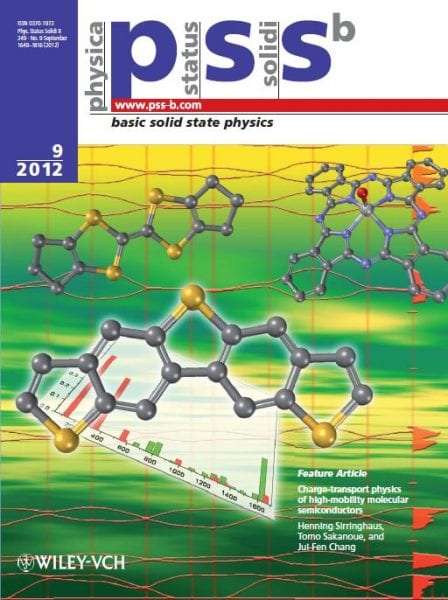 While for many years the performance of organic field-effect transistors seemed to be inherently lower than that of their inorganic counterparts, there has been tremendous scientific progress in the last decade. Now there is a broad range of organic semiconductors, which are able to reach mobility values exceeding that of amorphous silicon. Yet there are still important questions unanswered.
While for many years the performance of organic field-effect transistors seemed to be inherently lower than that of their inorganic counterparts, there has been tremendous scientific progress in the last decade. Now there is a broad range of organic semiconductors, which are able to reach mobility values exceeding that of amorphous silicon. Yet there are still important questions unanswered.
Henning Sirringhaus et al. focus their review in the September issue of pss b on charge-transport physics of high-mobility molecular semiconductors, because in spite of extensive research efforts there is still considerable controversy about the correct physical description of the charge carriers and the mechanism of charge transport in organic semiconductors, particularly in high-mobility systems.
Therefore H. Sirringhaus from the University of Cambridge, T. Sakanoue from Yamagata University, and J.-F. Chang from the National Central University in Taiwan focused in their Feature Article on understanding of the charge-transport physics of high-mobility organic semiconductors at a molecular level. The authors review recent small-molecule and polymer materials with a focus on crystalline materials that have been able to exceed mobilities of 0.5–1 cm²/V s. They discuss some of the main, competing factors that govern charge transport in these materials and present theoretical approaches that have been developed to describe systems in which moderately strong intermolecular electronic interactions and strong electron–phonon interactions are present.
The authors also review recent experimental results that address the important question of whether at room temperature the charge transport in these high-mobility organic semiconductors is in fact simply the classical band-like conduction of crystalline inorganic semiconductors or the molecular hopping conduction as in disordered, low-mobility organic semiconductors.
The team shows that in the recent years there has been experimental evidence to support both theories and they outline their approach to explain all the observed phenomena. The authors point out that based on their own explanation, higher mobilities can be expected in molecular architectures that effectively reduce fluctuations in relative molecular positions and orientations. They are confident that molecular modeling of dynamic disorder can provide a simulation tool at the molecular level to guide the design and development of new higher-mobility organic semiconductors.
Related Articles: The Review@RRL by Markus Wohlgenannt from the June issue focuses on organic magnetoresistance and spin diffusion in organic semiconductor thin film devices.

















